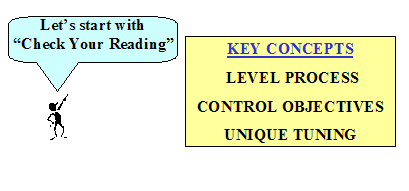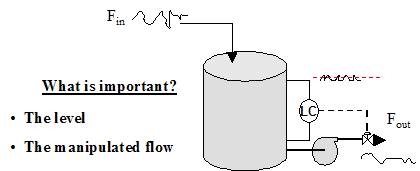

Chapter 18 Level and Inventory Control
Check Your Reading Study Questions Thought Questions
The questions will be categorized according to the key concepts in the chapter.
| Level Process | Control Objectives |
|
Feedback Control |
 |
 |
| Check Your Reading |
Solidify the Concepts |
| 18.1 The liquid level affects the pressure at the bottom of the tank, and thus, the driving force for the flow. Is the level below self-regulating or non-self regulating? |
Level Process |
| 18.2 What is the guideline for the liquid volume in the liquid level in this flash drum? |
Level Process |
| 18.3 Tight level control is useful when |
Control Objectives |
| 18.4 Averaging (loose) level control is useful when |
Control Objectives |
| 18.5 The method for tuning level controllers is easy and gives good performance. Why didn't we use this method in Chapter 9 for all control loops? |
Feedback Control |
| 18.6 When we want to implement averaging level control, what factors contribute to good performance? |
Control Objectives |